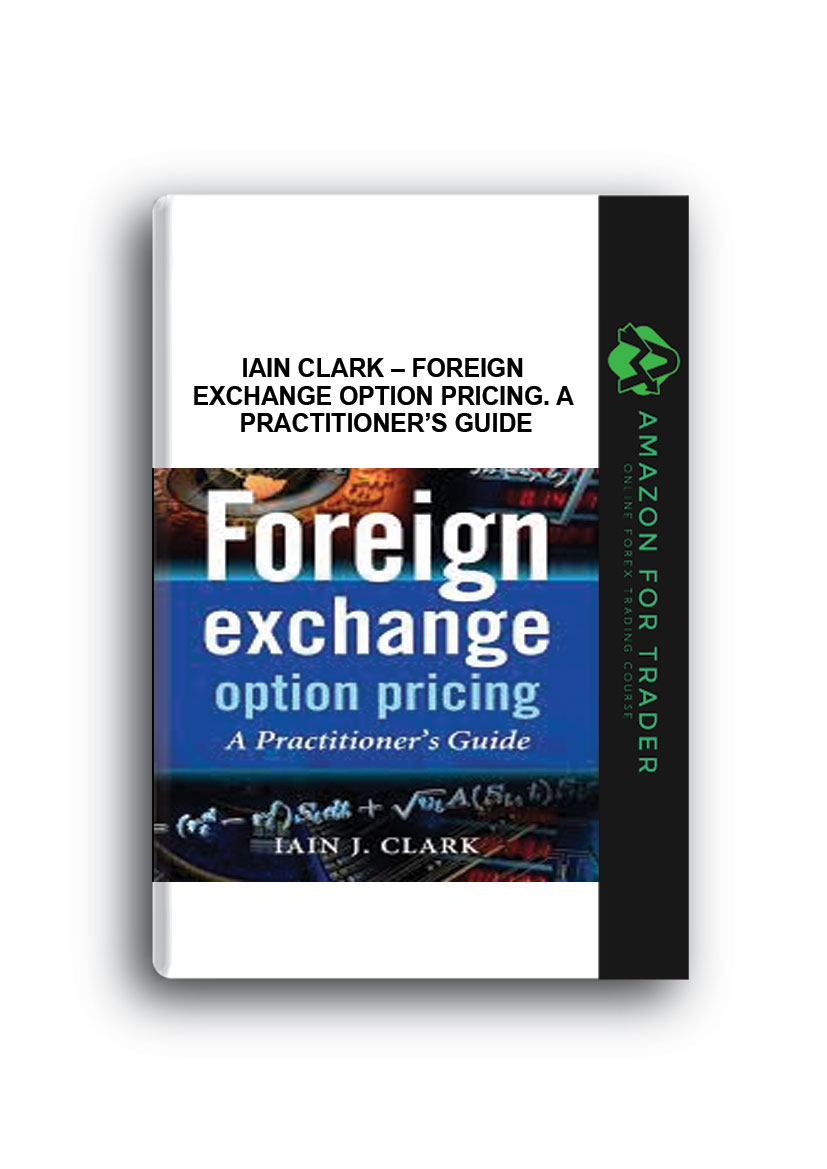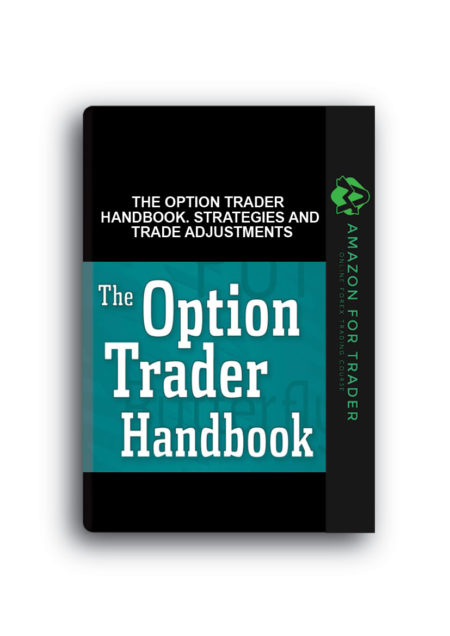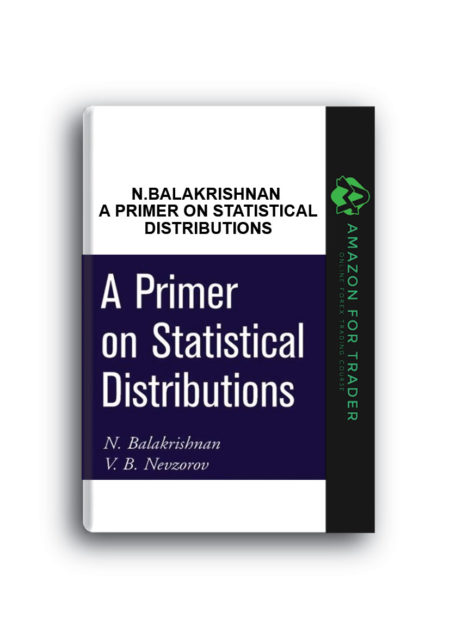Description
Iain Clark – Foreign Exchange Option Pricing. A Practitioner’s Guide
Description
This book covers foreign exchange options from the point of view of the finance practitioner. It contains everything a quant or trader working in a bank or hedge fund would need to know about the mathematics of foreign exchange—not just the theoretical mathematics covered in other books but also comprehensive coverage of implementation, pricing and calibration.
With content developed with input from traders and with examples using real-world data, this book introduces many of the more commonly requested products from FX options trading desks, together with the models that capture the risk characteristics necessary to price these products accurately. Crucially, this book describes the numerical methods required for calibration of these models – an area often neglected in the literature, which is nevertheless of paramount importance in practice. Thorough treatment is given in one unified text to the following features:
- Correct market conventions for FX volatility surface construction
- Adjustment for settlement and delayed delivery of options
- Pricing of vanillas and barrier options under the volatility smile
- Barrier bending for limiting barrier discontinuity risk near expiry
- Industry strength partial differential equations in one and several spatial variables using finite differences on nonuniform grids
- Fourier transform methods for pricing European options using characteristic functions
- Stochastic and local volatility models, and a mixed stochastic/local volatility model
- Three-factor long-dated FX model
- Numerical calibration techniques for all the models in this work
- The augmented state variable approach for pricing strongly path-dependent options using either partial differential equations or Monte Carlo simulation
Connecting mathematically rigorous theory with practice, this is the essential guide to foreign exchange options in the context of the real financial marketplace.
Table of Contents
Acknowledgements xiii
List of Tables xv
List of Figures xvii
1 Introduction 1
1.1 A Gentle Introduction to FX Markets 1
1.2 Quotation Styles 2
1.3 Risk Considerations 5
1.4 Spot Settlement Rules 5
1.5 Expiry and Delivery Rules 8
1.5.1 Expiry and delivery rules – days or weeks 8
1.5.2 Expiry and delivery rules – months or years 9
1.6 Cutoff Times 10
2 Mathematical Preliminaries 13
2.1 The Black–Scholes Model 13
2.1.1 Assumptions of the Black–Scholes model 13
2.2 Risk Neutrality 13
2.3 Derivation of the Black–Scholes equation 14
2.4 Integrating the SDE for ST 17
2.5 Black–Scholes PDEs Expressed in Logspot 18
2.6 Feynman–Kac and Risk-Neutral Expectation 18
2.7 Risk Neutrality and the Presumption of Drift 20
2.8 Valuation of European Options 23
2.8.1 Forward 26
2.9 The Law of One Price 27
2.10 The Black–Scholes Term Structure Model 28
2.11 Breeden–Litzenberger Analysis 30
2.12 European Digitals 31
2.13 Settlement Adjustments 32
2.14 Delayed Delivery Adjustments 33
2.15 Pricing using Fourier Methods 35
2.15.1 European option pricing involving one numerical integral 37
2.16 Leptokurtosis – More than Fat Tails 38
3 Deltas and Market Conventions 41
3.1 Quote Style Conversions 41
3.2 The Law of Many Deltas 43
3.3 FX Delta Conventions 47
3.4 Market Volatility Surfaces 49
3.5 At-the-Money 50
3.6 Market Strangle 53
3.6.1 Example – EURUSD 1Y 55
3.7 Smile Strangle and Risk Reversal 55
3.8 Visualisation of Strangles 57
3.9 Smile Interpolation – Polynomial in Delta 59
3.10 Smile Interpolation – SABR 60
3.11 Concluding Remarks 62
4 Volatility Surface Construction 63
4.1 Volatility Backbone – Flat Forward Interpolation 65
4.2 Volatility Surface Temporal Interpolation 67
4.3 Volatility Surface Temporal Interpolation – Holidays and Weekends 70
4.4 Volatility Surface Temporal Interpolation – Intraday Effects 73
5 Local Volatility and Implied Volatility 77
5.1 Introduction 77
5.2 The Fokker–Planck Equation 78
5.3 Dupire’s Construction of Local Volatility 83
5.4 Implied Volatility and Relationship to Local Volatility 86
5.5 Local Volatility as Conditional Expectation 87
5.6 Local Volatility for FX Markets 88
5.7 Diffusion and PDE for Local Volatility 89
5.8 The CEV Model 90
5.8.1 Asymptotic expansion 91
6 Stochastic Volatility 95
6.1 Introduction 95
6.2 Uncertain Volatility 95
6.3 Stochastic Volatility Models 96
6.4 Uncorrelated Stochastic Volatility 107
6.5 Stochastic Volatility Correlated with Spot 108
6.6 The Fokker–Planck PDE Approach 111
6.7 The Feynman–Kac PDE Approach 113
6.8 Local Stochastic Volatility (LSV) Models 117
7 Numerical Methods for Pricing and Calibration 129
7.1 One-Dimensional Root Finding – Implied Volatility Calculation 129
7.2 Nonlinear Least Squares Minimisation 130
7.3 Monte Carlo Simulation 131
7.4 Convection–Diffusion PDEs in Finance 147
7.5 Numerical Methods for PDEs 153
7.6 Explicit Finite Difference Scheme 155
7.7 Explicit Finite Difference on Nonuniform Meshes 163
7.8 Implicit Finite Difference Scheme 165
7.9 The Crank–Nicolson Scheme 167
7.10 Numerical Schemes for Multidimensional PDEs 168
7.11 Practical Nonuniform Grid Generation Schemes 173
7.12 Further Reading 176
8 First Generation Exotics – Binary and Barrier Options 177
8.1 The Reflection Principle 179
8.2 European Barriers and Binaries 180
8.3 Continuously Monitored Binaries and Barriers 183
8.4 Double Barrier Products 194
8.5 Sensitivity to Local and Stochastic Volatility 195
8.6 Barrier Bending 197
8.7 Value Monitoring 202
9 Second Generation Exotics 205
9.1 Chooser Options 206
9.2 Range Accrual Options 206
9.3 Forward Start Options 207
9.4 Lookback Options 209
9.5 Asian Options 212
9.6 Target Redemption Notes 214
9.7 Volatility and Variance Swaps 214
10 Multicurrency Options 225
10.1 Correlations, Triangulation and Absence of Arbitrage 226
10.2 Exchange Options 229
10.3 Quantos 229
10.4 Best-ofs and Worst-ofs 233
10.5 Basket Options 239
10.6 Numerical Methods 241
10.7 A Note on Multicurrency Greeks 242
10.8 Quantoing Untradeable Factors 243
10.9 Further Reading 244
11 Longdated FX 245
11.1 Currency Swaps 245
11.2 Basis Risk 247
11.3 Forward Measure 249
11.4 LIBOR in Arrears 250
11.5 Typical Longdated FX Products 253
11.6 The Three-Factor Model 255
11.7 Interest Rate Calibration of the Three-Factor Model 257
11.8 Spot FX Calibration of the Three-Factor Model 259
11.9 Conclusion 264
References 265
Further Reading 271
Index 273
Author Information
Dr Iain J. Clark, (London, UK), is Head of Foreign Exchange Quantitative Analysis at Dresdner Kleinwort in London, where he set up and runs the team responsible for developing pricing libraries for the front office. Previously, he was Director of the Quantitative Research Group in Lehman Brothers, Fixed Income Quantitative Analyst at BNP Paribas and has also worked in FX Commodities Derivatives research at JP Morgan. He holds an MSc in Mathematics from the University of Edinburgh, and a PhD in Applied Mathematics from the University of Queensland, Australia. Dr Clark is a regular speaker at key finance events, and has presented at London Imperial College, The Bachelier Society Annual Conference, London Imperial College, world business Strategies annual Conference, Risk events, Marcus Evans events and many more.
Iain Clark, Foreign Exchange Option Pricing. A Practitioner’s Guide, Download Foreign Exchange Option Pricing. A Practitioner’s Guide, Free Foreign Exchange Option Pricing. A Practitioner’s Guide, Foreign Exchange Option Pricing. A Practitioner’s Guide Torrent, Foreign Exchange Option Pricing. A Practitioner’s Guide Review, Foreign Exchange Option Pricing. A Practitioner’s Guide Groupbuy.










Reviews
There are no reviews yet.